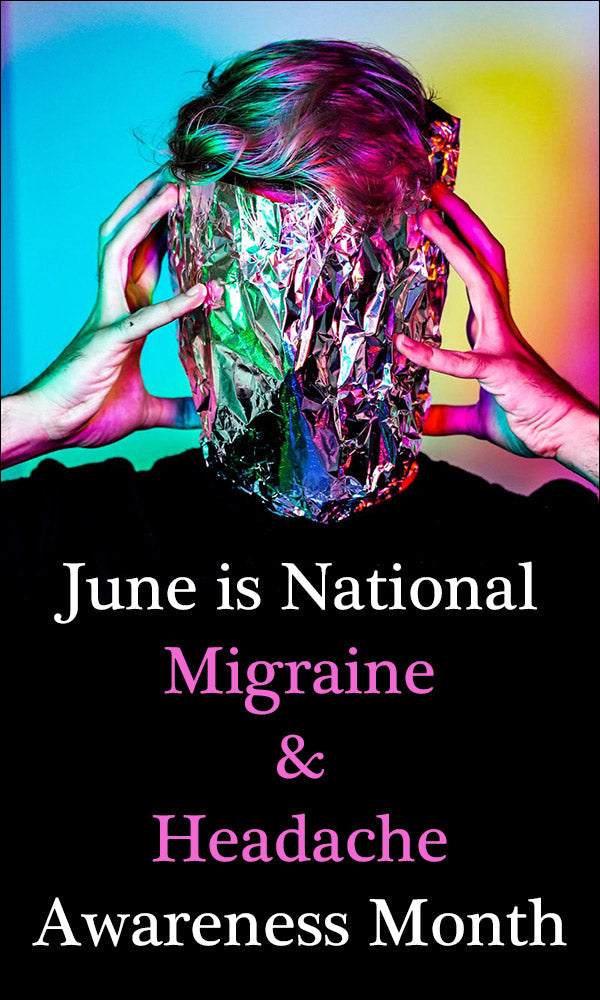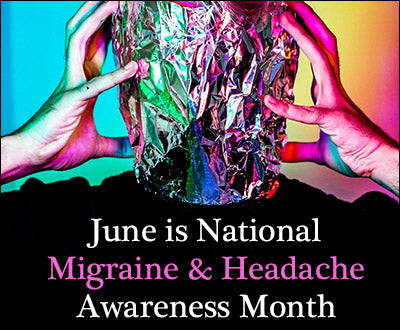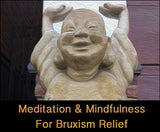Why Migraine Awareness Month is So Important
The month of June is all about BBQs, getting some sun, and… migraine awareness?
Well, according to the National Headache Foundation and the American Academy of Pain Medicine, June is National Migraine and Headache Awareness Month.
It even has its own hashtag, #MHAM, which stands for Migraine and Headache Awareness Month.
So, why does the medical community make such an effort to raise awareness about migraines?
What causes them, and what can be done to help those who suffer find relief?
Check out the information below as we do our part to honor national migraine awareness month.

What are the 4 Stages or Phases of a Migraine?
A headache is a general term for pain in the head area. It is usually characterized by wide-spread pain throughout the whole head (or, at least, large portions) and can be caused by any number of things.
The Mayo Clinic lists the causes and types of headaches ranging from nasal congestion, stress, too much or lack of exercise, medication overuse, and tension headaches.
Headaches are very common, but their causes are diverse and not well understood.
A migraine is a specific type of headache.
Migraines are usually localized to one side of the head, but they can occur on both sides, and they are often associated with a specific pattern of occurrence.
Not everyone who experiences migraines will experience each stage or phase, but generally, there are four stages or phases of a migraine:
1. Prodrome Stage or Phase
The Prodrome Stage or Phase usually begins 1 or 2 days before the actual onset of a migraine, and while most people will experience this stage, it might not happen before every migraine.
Prodrome symptoms can include:
- Depression
- Mood swings
- Food cravings
- Neck stiffness
- Sensitivity to light
- Excessive yawning
- Increased thirst or urination
2. Aura Stage or Phase
In the Aura Stage or Phase, an aura can occur during or before migraine pain begins. Only about a third of migraine sufferers will experience the Aura stage before the headache begins.
Symptoms usually build up in intensity over 20 to 60 minutes and most often include visual disturbances.
Typical Aura Stage symptoms include:
- Vision loss
- Tingling sensation in the extremities
- Weakness or numbness on one side of the body
- Difficulty speaking
- Hearing noises
- Uncontrollable muscle movements along with other symptoms that can occur in this stage
3. Attack Stage or Phase
The Attack Stage or Phase refers to the onset of intense, throbbing pain on one or both sides of the head. This is alos known as the Headache Phase.
Symptoms can last between 4 to 72 hours and can vary widely between people, or each migraine instance.
Attack Stage or Headache Phase symptoms usually include:
- Sensitivity to light and sound
- Nausea
- Vomiting
- Intense irritability
- Anxiety
- Aversion to sound
- Difficulty sleeping
4. Postdrome Stage or Phase
After an attack, a person may feel confused, drained, or overly emotional in the Postdrome Phase. This stage is sometimes referred to as a “migraine hangover” and usually lasts for up to a day, and occurs in approximately 80% of the people who suffer from migraines. Like the other stages, Postdrome symptoms might not be present after each occurrence.
Postdrome Stage or Headache Phase symptoms often include:
- Body aches
- Fatigue and restlessness
- Difficulty concentrating
- Dizziness or feeling lightheaded
- Sensitivity to light and sounds
- Mild headache
After a migraine has ceased, it’s important to avoid bright lights or loud sounds and practice relaxation techniques to reduce stress and physical tension such as meditation or mindfulness. It’s also recommended to drink plenty of water and remain thoroughly hydrated.
How to Relieve Migraine Pain
Causes of migraine pain are not well understood. However, certain activities have been shown to reduce the frequency and severity of each attack.
Limiting stress, maintaining a healthy weight, exercising, eating healthy foods while limiting junk foods, and maintaining a regular sleep schedule are all factors that play a part in easing migraines.
Identifying the specific trigger of an attack is paramount to getting relief. Sometimes there are underlying medical conditions that create disturbances in the body’s natural rhythm, and these disturbances can trigger an attack.
For example, bruxism is a condition characterized by habitual grinding of the teeth and excessive clenching of the jaw. As a result, bruxism can lead to jaw disorders, stiff neck muscles, headaches, and sleep disruption. These factors together can trigger migraines.
A person with bruxism would need to address this condition to gain relief from their migraines, just as a person with high blood pressure or hormonal imbalances would need to address these conditions to combat their migraines. The most common way is through the use of a dental mouth guard that helps to prevent nighttime clenching and grinding.
One way to identify triggers is to keep a migraine journal and at the onset of symptoms, write down any details leading up to the event, such as foods recently eaten, prior stressful situations that occurred, and other related information to identify patterns that appear directly before migraines begin.
Understanding and identifying triggers can help reduce the number of attacks that might happen in the future. By knowing that a migraine is coming, steps can be taken to decease the severity of the side effects, and certain medications can completely alleviate the onset altogether.
Some over-the-counter medications such as Advil or Excedrin Migraine tablets have proven to effective for many people when taken at the first sign of symptoms.
Honor National Migraine Awareness Month this June
Many of the 35 million+ people who suffer from migraines do not seek treatment. They believe that headaches and pain are just a normal part of their existence. They fail to recognize that headaches and migraines are real medical issues that can be treated successfully.
Even worse, headaches and migraines can often be indicative of other severe underlying medical conditions like bruxism, high-blood pressure, or hormonal imbalances, which have serious consequences if left untreated.
It’s no wonder that medical professionals are calling out to the public to seek treatment for their headaches in the same way they would for any other pain.
This migraine awareness month, do your part to help those in pain know that there is treatment available.






